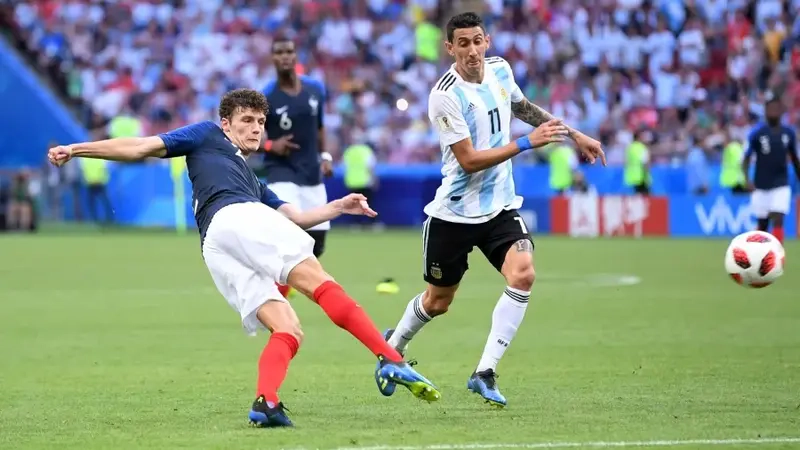Introduction
In the vast world of sports, large tournaments often steal the spotlight. Yet, tucked away from the grandeur and spectacle, a small world cup offers something unique — intimacy, passion, and a deep connection with its roots. Whether it’s football, cricket, or another global game, these smaller tournaments bring nations together, promote youth development, and preserve the spirit of sportsmanship.
What Is a Small World Cup?
A small world cup refers to a scaled-down version of the traditional World Cup tournament. These tournaments typically involve fewer teams, a shorter schedule, and are hosted in smaller venues or countries. Despite their size, the intensity and enthusiasm they generate are immense. These events cater to emerging nations or young athletes, creating platforms where talent shines beyond the glare of mainstream media.
Often, these competitions include regional countries or are age-specific — like under-17 or under-20 events. The purpose is not just to compete, but also to nurture rising stars and foster international camaraderie.
Origins and Evolution
The concept of a small world cup isn’t new. It emerged as a way to provide competitive opportunities for countries and players who might not qualify for the main events. For instance, FIFA introduced youth tournaments decades ago to allow young players to gain international experience. Similarly, sports like rugby and handball have hosted smaller world cups to promote the game in developing regions.
These events have evolved significantly. Initially viewed as minor alternatives, they now enjoy considerable attention from scouts, clubs, and fans. Their growth underlines the increasing need to democratize global sports.
Why Small World Cups Matter
There are numerous reasons why a small world cup holds value in the sporting ecosystem:
1. Talent Development
These tournaments serve as breeding grounds for future legends. Players like Lionel Messi, Paul Pogba, and Ronaldinho first gained international fame in youth World Cups. Such events provide an early stage for raw talent to flourish.
2. Inclusive Competition
Not every country has the resources to host or participate in mega-events. A small world cup allows smaller or developing nations to participate in a global setting, boosting national morale and experience.
3. Cultural Exchange
Smaller tournaments promote cultural understanding. When young athletes travel across borders to compete, they learn to appreciate diverse lifestyles, languages, and traditions — a priceless lesson beyond the pitch.
4. Economic Feasibility
Hosting a small-scale international event is more affordable. Countries can gain global exposure, boost tourism, and strengthen infrastructure without incurring the massive costs of a full-scale World Cup.
Memorable Moments from Small World Cups
While the main World Cup captures most headlines, a small cup has its fair share of unforgettable moments. In 2011, Japan’s under-17 women’s football team stunned the world with their disciplined and elegant gameplay. Similarly, in cricket, the ICC U19 World Cup has introduced prodigies like Virat Kohli and Steve Smith to the world.
These events may lack the fanfare, but the intensity and emotional highs are often equal — if not greater.
Role of Fans and Community
The fan experience in a small world cup is often more personal and immersive. With smaller stadiums and local crowds, fans feel closer to the action. Unlike massive events where commercialization dominates, these tournaments emphasize community bonding and authentic support.
Local businesses, schools, and cultural groups often participate actively — from hosting teams to organizing parades and events. This grassroots involvement fosters a sense of ownership and pride within the host community.
Challenges Faced by Small World Cups
Despite their many benefits, a small world cup also faces challenges. These include:
-
Limited media coverage, making it harder for the event to gain international attention.
-
Sponsorship and funding issues, as companies prefer investing in larger, more visible tournaments.
-
Infrastructure limitations in host countries, affecting player comfort and match quality.
However, many organizations and federations are working to overcome these issues by increasing digital broadcasting, forging regional partnerships, and offering logistical support.
The Future of Compact World Tournaments
Looking ahead, a small world cup is poised to become more relevant than ever. With rising concerns over the environmental and economic costs of large events, smaller tournaments offer a sustainable alternative. They also align well with the growing global interest in youth sports, women’s sports, and regional competitions.
Organizations are now exploring hybrid models — where small world cups are interspersed with major ones, ensuring consistent engagement and broader inclusion. Technological advancements like streaming and social media are also bridging the gap between visibility and scale.
Conclusion
While the world marvels at grand spectacles like the FIFA World Cup or ICC Cricket World Cup, it’s important not to overlook the value of a small world cup. These tournaments carry the true soul of sport — raw passion, emerging talent, and global friendship. They may be smaller in scale, but their impact is massive.
In a time where inclusivity and accessibility are key, a small world cup stands as a beacon of hope and opportunity. As fans, athletes, and nations continue to support these tournaments, their relevance will only grow. And who knows — the next global superstar might just be kicking off their journey at a small world cup near you.
> For more information link to click
